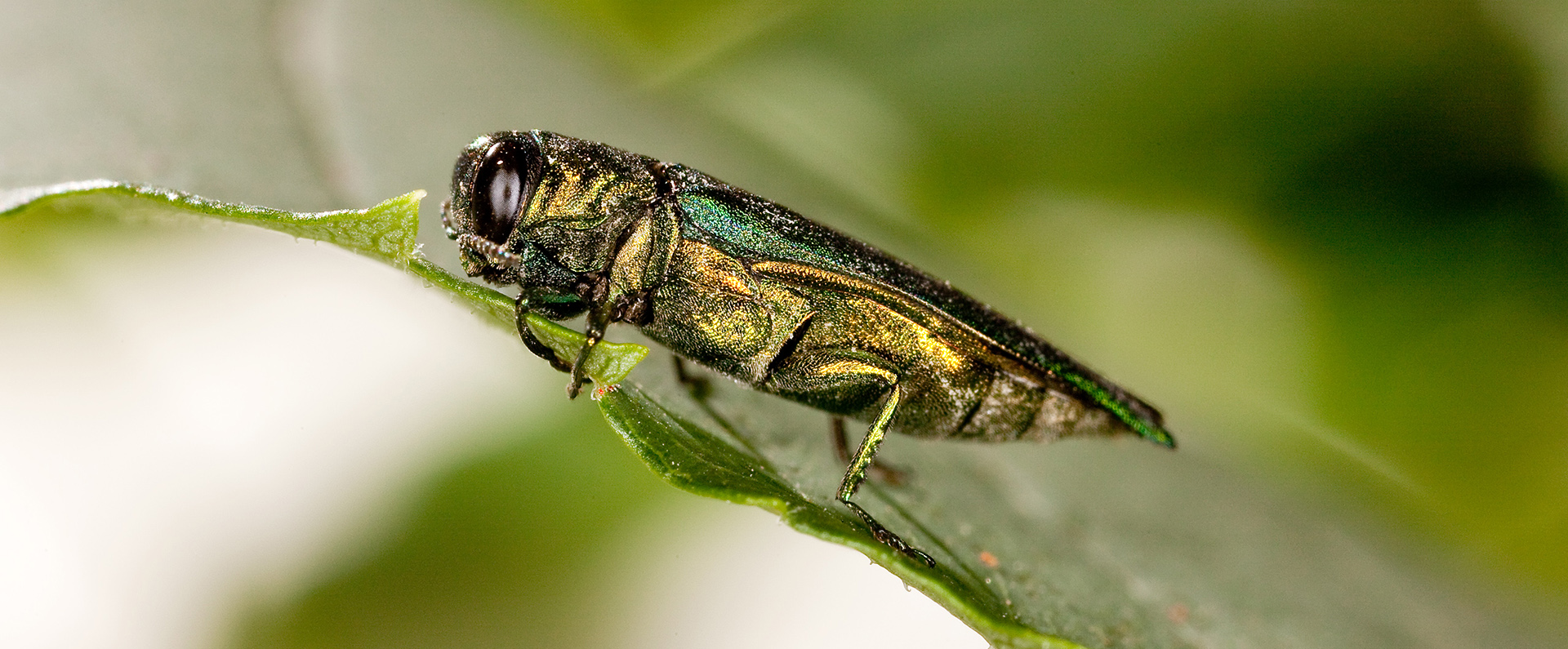Countering an Ash Tree Threat

White ash has been a go-to wood for making Major League Baseball bats for quite some time because of its light weight and resistance to splintering, among other properties.
But the sturdy wood species is no match for a half-inch, metallic green beetle known as the “Emerald Ash borer” (EAB). The invasive pest was first detected near Detroit, MI, in 2002 and is found today in 33 States and two Canadian provinces.
The EAB's larvae are mainly to blame for the deaths of hundreds of millions of ash trees. The larvae feed on the tree's inner bark, disrupting the movement of water and nutrients.
ARS researchers in Newark, DE, are working to counter such attacks with releases of the parasitic wasp Tetrastichus planipennisi and gene-based control. In a 3-year study, the wasps killed 36 to 85 percent of EAB larvae in ash saplings and caused the pest's population to crash.
The other approach deactivates specific EAB genes with material called “double-stranded RNA. ” In the lab, larvae that fed on sugar water containing the RNA died after 10 days, raising the prospect for a new, nontoxic pesticide to fight them with.
Used in concert with other measures, these approaches could help put an end to the pest's appetite for destruction, saving a beloved tree of ecological, cultural, and economic importance to the Nation.
Related Information
Article: Controlling Emerald Ash Borer



